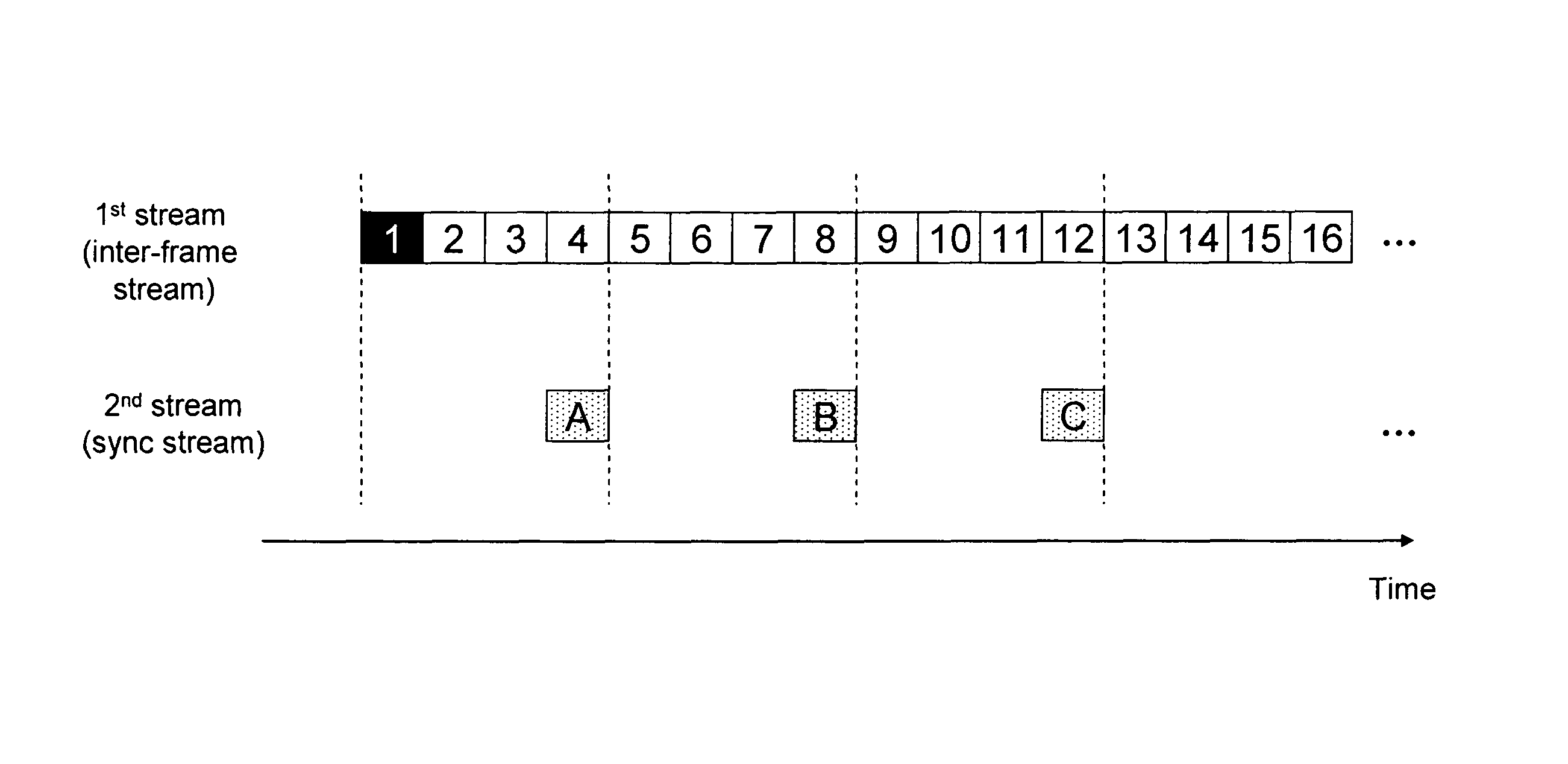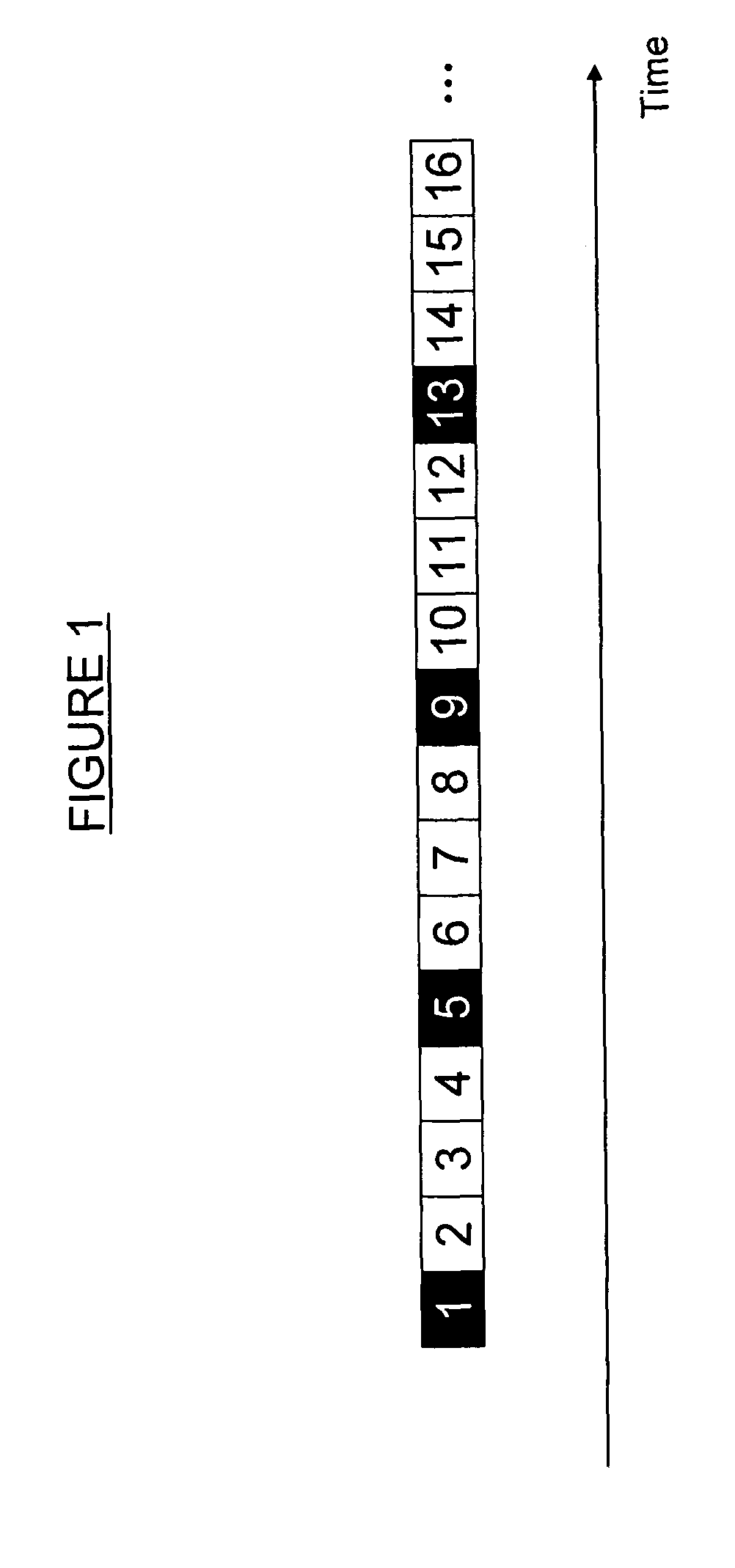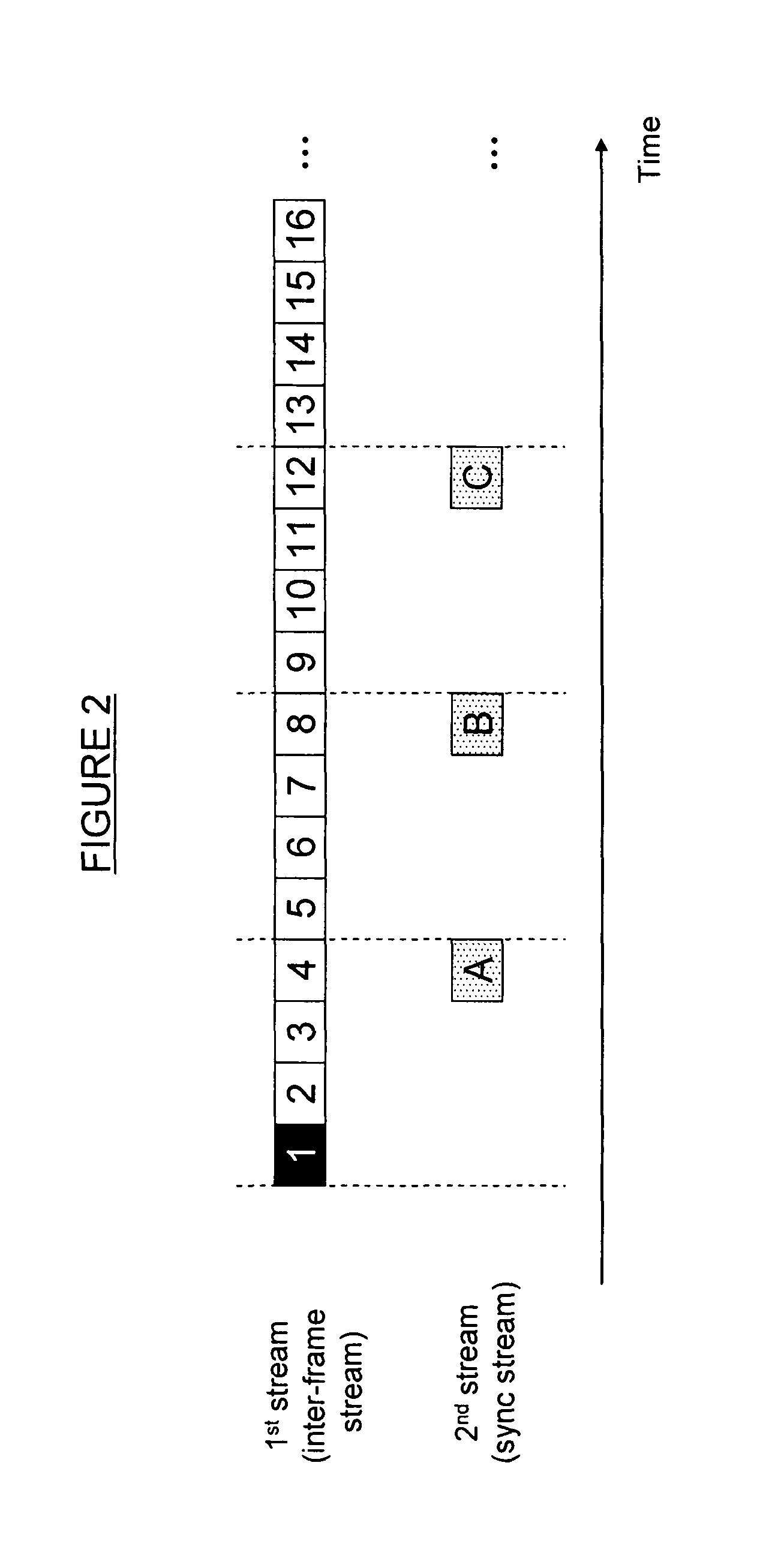Coding data streams
a data stream and data technology, applied in the field of data encoding, can solve problems such as error and artifacts, start decoding video, incur a larger transmission bandwidth,
- Summary
- Abstract
- Description
- Claims
- Application Information
AI Technical Summary
Benefits of technology
Problems solved by technology
Method used
Image
Examples
Embodiment Construction
[0041]In preferred embodiments, the present invention is applied to cross-layer optimization for multimedia stream delivery over a peer-to-peer (P2P) communication system. In this case, the idea is to make the routing peer in between nodes more intelligent, so that the content of the stream can be modified in the network in a distributed manner.
[0042]Referring to FIGS. 5 and 7b, consider a case where a first recipient node 102(Y) establishes a connection with a transmitting node 102(X) (the provider) and begins receiving a video stream over that connection, and then subsequently a second recipient node 102(Z) is to join the stream. For example, the purpose could be a live video conference or phone conference. The nodes may be referred to herein as X, Y and Z for brevity. Each node is preferably an end-user node such as a desktop or laptop PC or internet-enabled mobile phone, e.g. being peers of a P2P system.
[0043]Instead of simply establishing another one-to-one connection between t...
PUM
 Login to View More
Login to View More Abstract
Description
Claims
Application Information
 Login to View More
Login to View More - R&D
- Intellectual Property
- Life Sciences
- Materials
- Tech Scout
- Unparalleled Data Quality
- Higher Quality Content
- 60% Fewer Hallucinations
Browse by: Latest US Patents, China's latest patents, Technical Efficacy Thesaurus, Application Domain, Technology Topic, Popular Technical Reports.
© 2025 PatSnap. All rights reserved.Legal|Privacy policy|Modern Slavery Act Transparency Statement|Sitemap|About US| Contact US: help@patsnap.com



